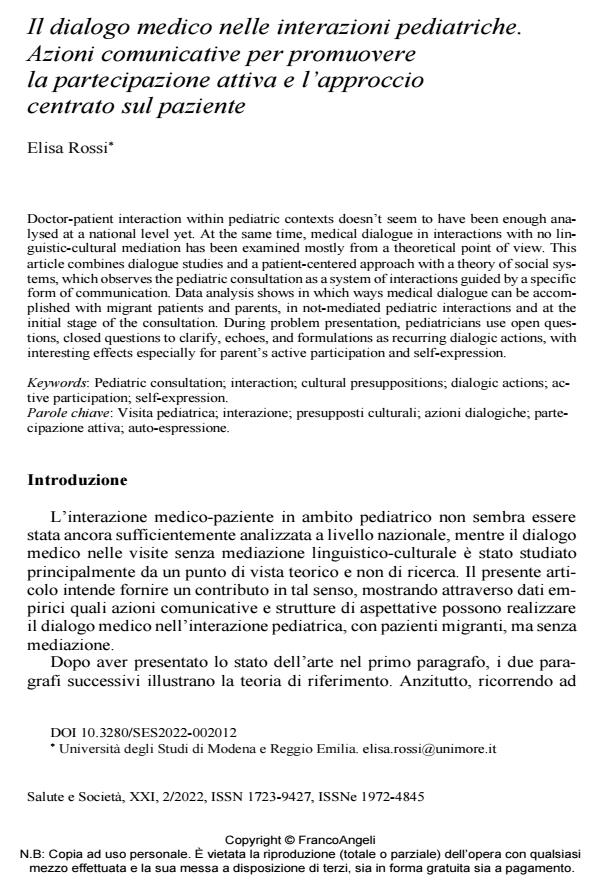Il dialogo medico nelle interazioni pediatriche. Azioni comunicative per promuovere la partecipazione attiva e l’approccio centrato sul paziente
Journal title SALUTE E SOCIETÀ
Author/s Elisa Rossi
Publishing Year 2022 Issue 2022/2
Language Italian Pages 15 P. 165-179 File size 105 KB
DOI 10.3280/SES2022-002012
DOI is like a bar code for intellectual property: to have more infomation
click here
Below, you can see the article first page
If you want to buy this article in PDF format, you can do it, following the instructions to buy download credits

FrancoAngeli is member of Publishers International Linking Association, Inc (PILA), a not-for-profit association which run the CrossRef service enabling links to and from online scholarly content.
Doctor-patient interaction within pediatric contexts doesn’t seem to have been enough ana-lysed at a national level yet. At the same time, medical dialogue in interactions with no linguis-ticcultural mediation has been examined mostly from a theoretical point of view. This article combines dialogue studies and a patient-centered approach with a theory of social systems, which observes the pediatric consultation as a system of interactions guided by a specific form of communication. Data analysis shows in which ways medical dialogue can be accomplished with migrant patients and parents, in not-mediated pediatric interactions and at the initial stage of the consultation. During problem presentation, pediatricians use open questions, closed questions to clarify, echoes, and formulations as recurring dialogic actions, with interesting effects especially for parent’s active participation and self-expression.
Keywords: Pediatric consultation; interaction; cultural presuppositions; dialogic actions; active participation; self-expression.
Elisa Rossi, Il dialogo medico nelle interazioni pediatriche. Azioni comunicative per promuovere la partecipazione attiva e l’approccio centrato sul paziente in "SALUTE E SOCIETÀ" 2/2022, pp 165-179, DOI: 10.3280/SES2022-002012